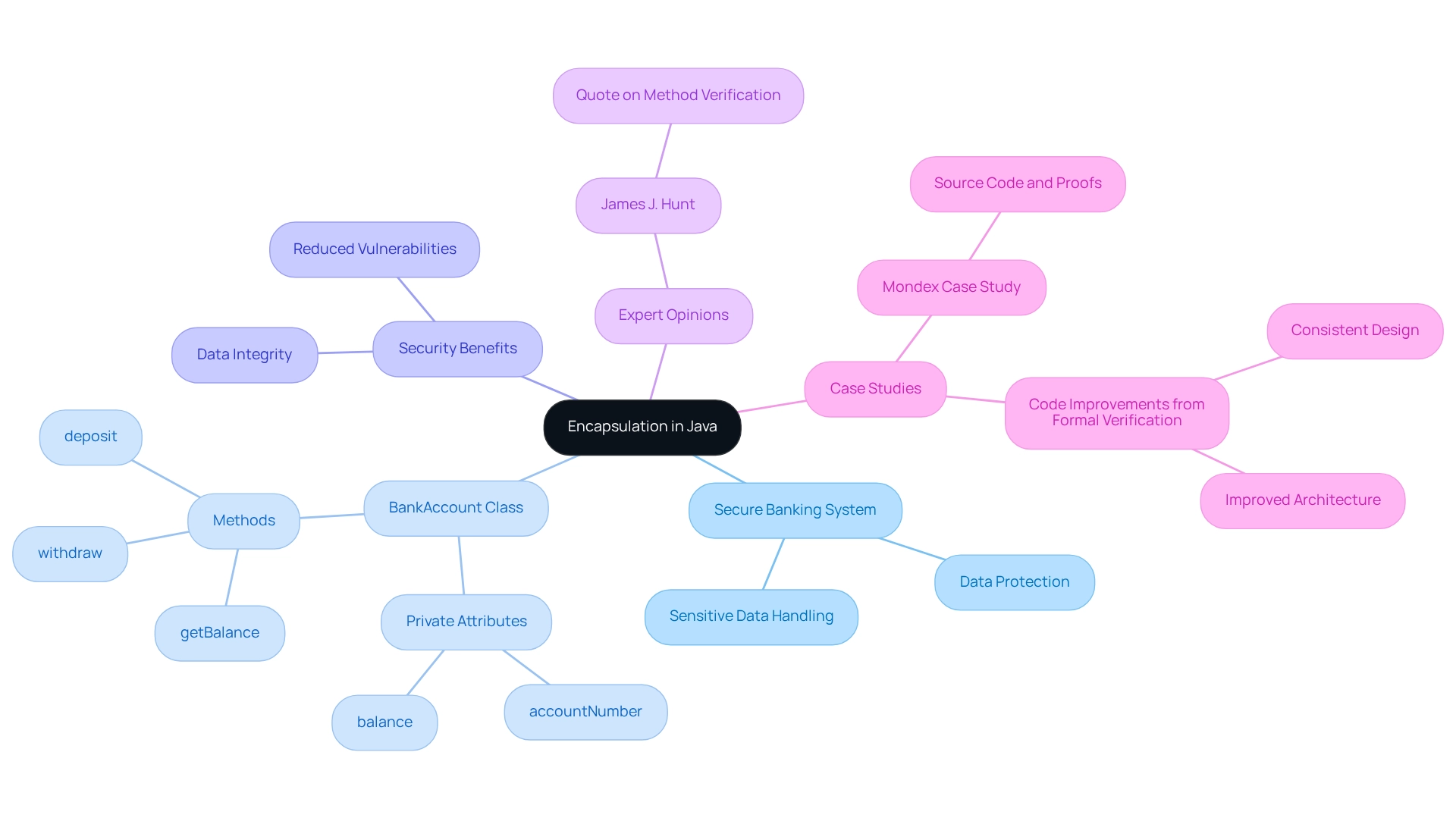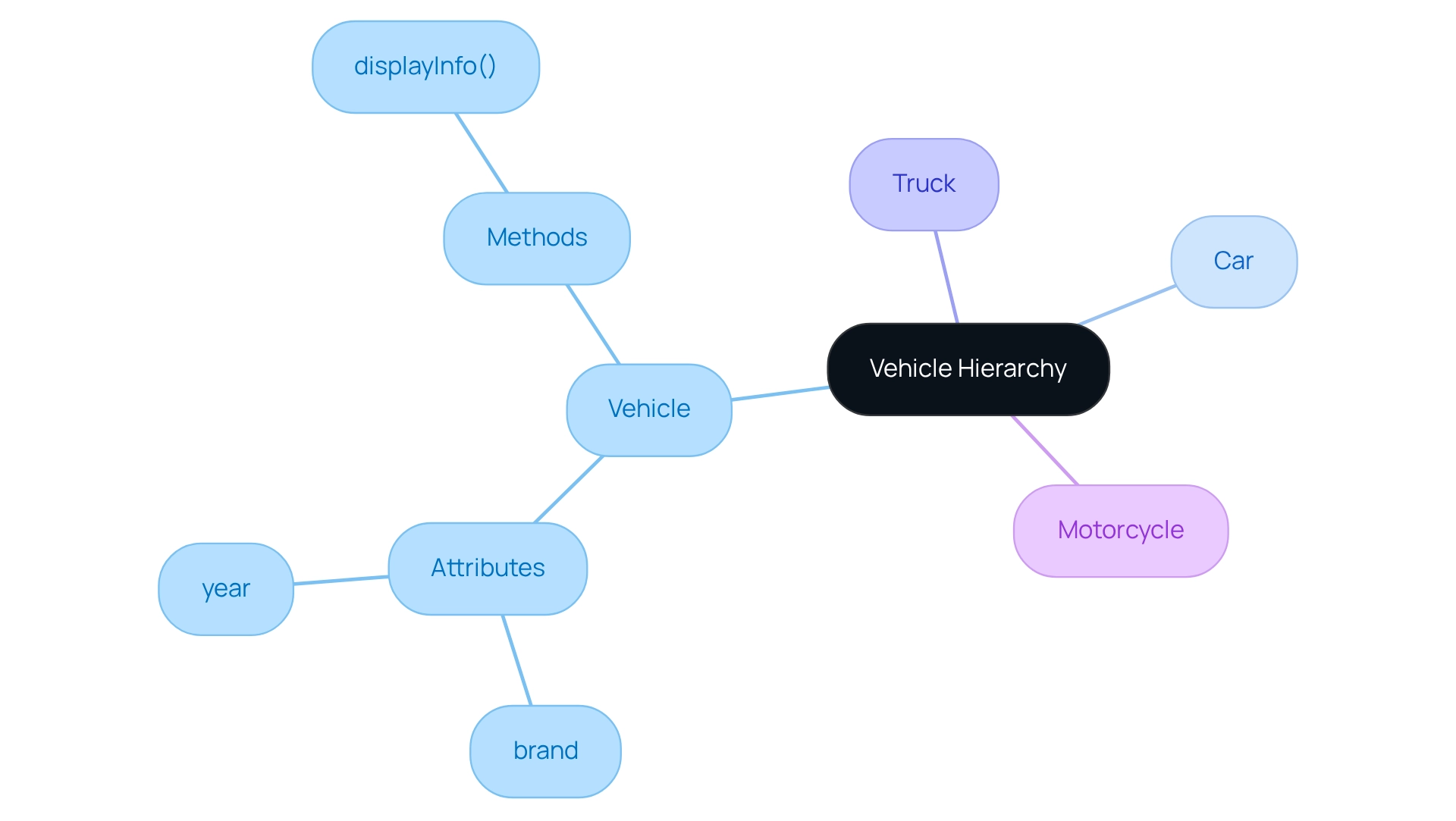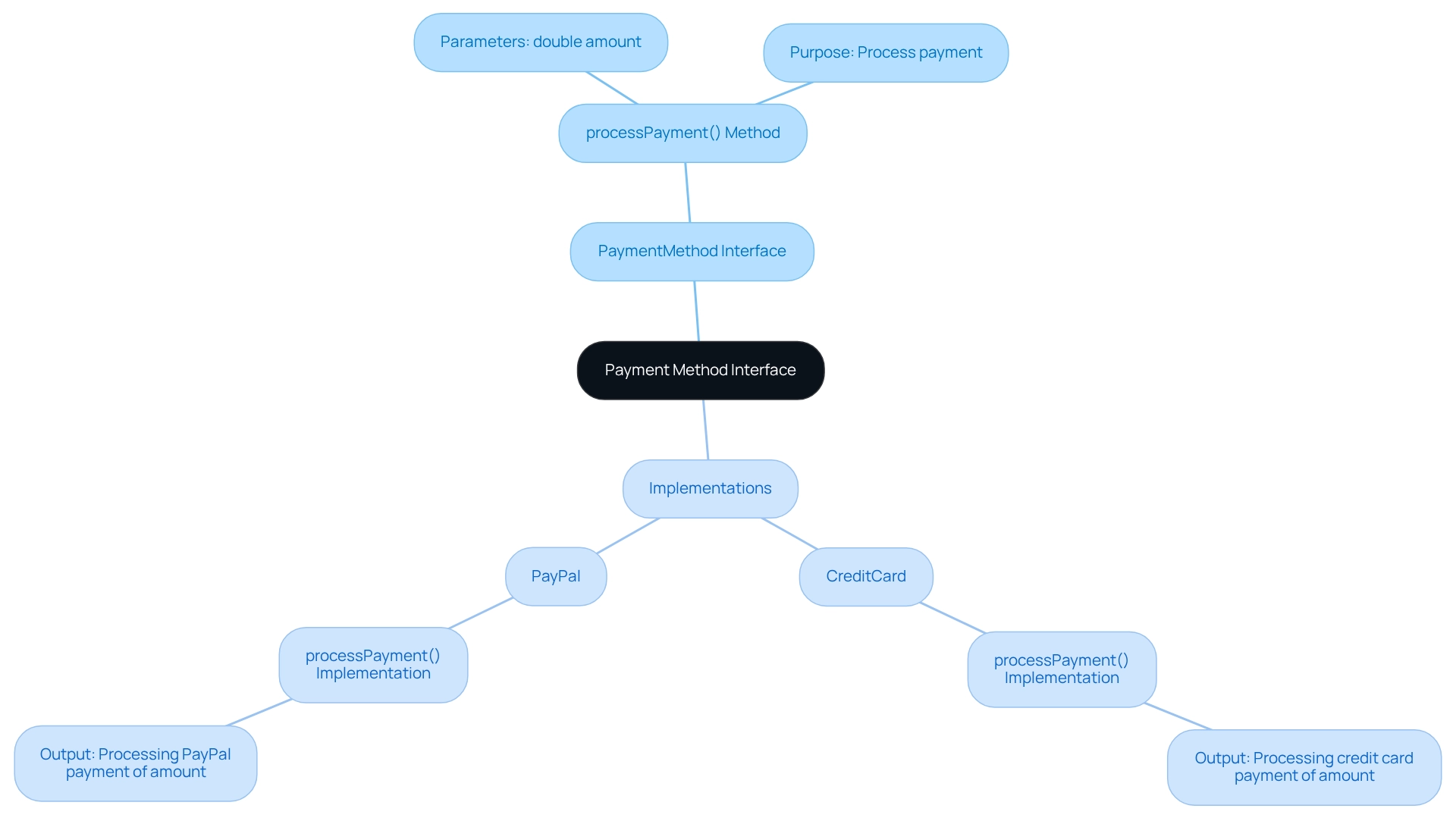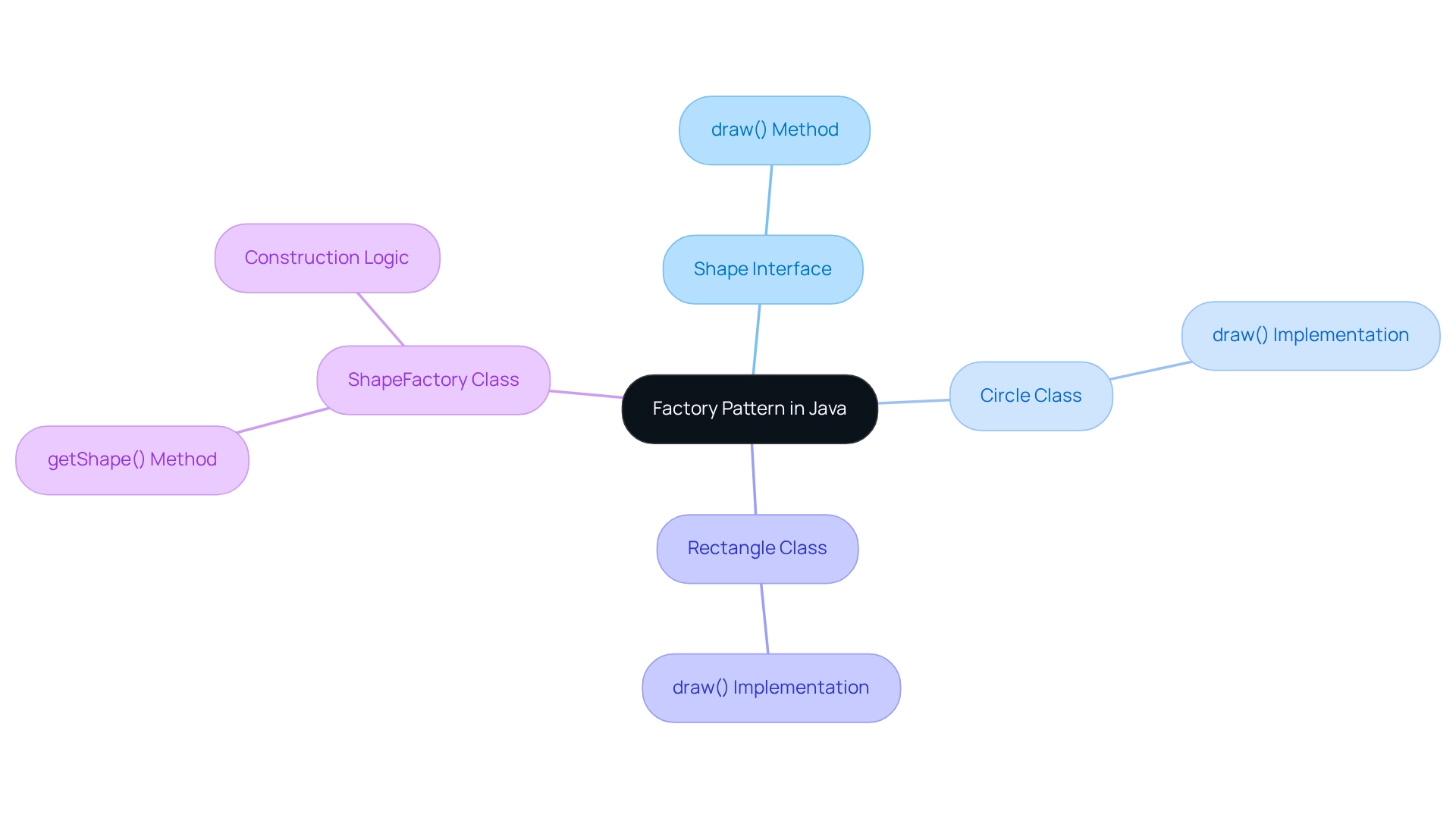Overview
In the world of software development, coding challenges are a common hurdle that many developers face. These challenges often stem from the complexities of object-oriented programming, which can be daunting without the right tools. Enter Kodezi, a platform designed to tackle these issues head-on. By providing practical examples and clear explanations of Java's object-oriented principles, Kodezi helps developers enhance their coding abilities.
With Kodezi, you can explore key concepts such as:
- Encapsulation
- Inheritance
- Polymorphism
- Abstraction
- Design patterns
Each principle is illustrated with code snippets and real-world applications, making it easier to grasp their significance. Furthermore, this hands-on approach reinforces the importance of these principles in writing effective Java code.
Are you looking to improve your productivity and code quality? Kodezi not only offers practical examples but also enhances your understanding of essential programming concepts. By utilizing this platform, developers can streamline their coding practices, leading to more efficient and effective outcomes.
Don't miss the opportunity to elevate your coding skills. Explore the tools available on Kodezi and discover how they can transform your approach to programming. With Kodezi, you are not just learning; you are empowering yourself to become a better developer.
Introduction
In the dynamic world of software development, developers often encounter significant challenges that can hinder their progress. Mastering Java programming is essential for creating robust applications; however, the complexities of coding can be daunting. How can developers overcome these obstacles? This is where Kodezi comes into play. With its innovative features designed to streamline coding processes, Kodezi addresses the common pain points faced by developers.
By leveraging best practices and utilizing tools like Kodezi, developers can enhance their productivity and improve code quality. Imagine having access to features that not only simplify coding but also promote efficiency. With Kodezi, developers can build efficient and maintainable code, ultimately leading to the creation of high-quality software solutions.
Furthermore, embracing design patterns like the Factory and Observer patterns can significantly enhance application development. These patterns provide developers with the tools necessary to create scalable and flexible applications. In addition, Kodezi empowers developers to adopt these practices seamlessly.
Are you ready to elevate your coding experience? Explore the tools available on the Kodezi platform and discover how you can transform your coding practices for the better.
Kodezi | Professional OpenAPI Specification Generator - AI Dev-Tool: Streamline Your Java Coding Process
In the fast-paced world of software development, coding challenges are a common hurdle that developers encounter. Kodezi emerges as a cutting-edge platform designed to simplify the Java coding process, particularly through its Professional OpenAPI Specification Generator. This versatile tool not only enables developers to automatically generate API documentation but also ensures that their code adheres to professional standards.
Furthermore, the Kodezi CLI empowers teams to auto-heal codebases by identifying and rectifying issues before code is pushed. This proactive approach significantly enhances performance, security, and compliance with coding standards. In addition, Kodezi automates the generation of OpenAPI 3.0 specifications and Swagger UI, streamlining the coding workflow and facilitating automated code reviews.
By utilizing Kodezi, developers can concentrate on building robust applications while maintaining high-quality code. The seamless integration with Java object oriented examples significantly boosts productivity, making it an essential tool for modern developers eager to enhance their coding skills. Are you ready to elevate your coding practices? Explore the tools available on Kodezi's platform and experience the difference.
Encapsulation Example: Creating a Secure Banking System in Java
Encapsulation in Java plays a pivotal role in addressing the coding challenges faced by developers, particularly in the context of secure banking systems. By structuring a BankAccount with private attributes like accountNumber and balance, developers can effectively safeguard sensitive data. This method restricts direct access to account balances, thereby preserving data integrity. Consider the following example:
public class BankAccount {
private String accountNumber;
private double balance;
public BankAccount(String accountNumber, double initialBalance) {
this.accountNumber = accountNumber;
this.balance = initialBalance;
}
public double getBalance() {
return balance;
}
public void deposit(double amount) {
if (amount > 0) {
balance += amount;
}
}
public void withdraw(double amount) {
if (amount > 0 && amount <= balance) {
balance -= amount;
}
}
}
This encapsulation technique not only enhances security but also aligns with the latest practices in Java development for 2025. Furthermore, statistics indicate that encapsulation significantly reduces vulnerabilities in software security, making it a vital practice for developers. For instance, a recent case study on secure banking system implementations in Java highlighted how encapsulation contributed to a more robust architecture, demonstrating its effectiveness in protecting sensitive data. Notably, the execution time for computing routes with 18 legs is 46,412 ms, showcasing the performance improvements achievable through effective encapsulation practices.
Experts emphasize that encapsulation is a foundational principle for secure coding. As James J. Hunt from aicas GmbH aptly states, "The first step for verifying a method is to analyze it carefully in order to write a clear and correct contract for it." This quote underscores the importance of careful method analysis in ensuring data protection. By adhering to these best practices, Java developers can create systems that are not only functional but also secure against potential threats. In addition, the complete material for the Mondex case study, including source code and proofs, is available online, providing further resources for understanding encapsulation in real-world applications.

Inheritance Example: Building a Class Hierarchy for Vehicles in Java
Inheritance in Java can be illustrated with java object oriented examples by establishing a hierarchy of vehicles, which addresses common coding challenges developers face. A base type Vehicle can be expanded by subclasses like Car, Truck, and Motorcycle. This structure allows for shared attributes and methods, as seen in java object oriented examples, promoting code reuse and enhancing efficiency. For instance:
[public class Vehicle](https://data-flair.training/blogs/abstract-class-in-java) {
protected String brand;
protected int year;
public Vehicle(String brand, int year) {
this.brand = brand;
[this.year = year](https://data-flair.training/blogs/abstract-class-in-java);
}
public void displayInfo() {
System.out.println(

Polymorphism Example: Implementing Method Overriding in a Shape Class
Polymorphism in Java is a concept that many developers encounter as they navigate coding challenges. A great way to illustrate Java object-oriented examples is through a Shape class that demonstrates method overriding. For instance, consider a base class Shape with a method called draw(), which is then overridden in subclasses such as Circle and Rectangle:
public class Shape {
public void draw() {
System.out.println("Drawing a shape");
}
}
public class Circle extends Shape {
@Override
public void draw() {
System.out.println("Drawing a circle");
}
}
public class Rectangle extends Shape {
@Override
public void draw() {
System.out.println("Drawing a rectangle");
}
}
public class TestShapes {
public static void main(String[] args) {
Shape myShape;
myShape = new Circle();
myShape.draw(); // Outputs: Drawing a circle
myShape = new Rectangle();
myShape.draw(); // Outputs: Drawing a rectangle
}
}
This example not only demonstrates the concept of polymorphism but also highlights how method overriding allows for different behaviors in subclasses. Have you considered how such features can enhance your coding practices? By understanding and implementing polymorphism, developers can create more flexible and maintainable code. Exploring tools that facilitate these concepts can lead to significant improvements in productivity and code quality.
Abstraction Example: Designing an Abstract Class for Animal Behavior in Java
Coding challenges can often be daunting for developers, particularly when dealing with complex systems. In Java object-oriented examples, abstraction effectively addresses these challenges through the design of an abstract class that models animal behavior. Consider the abstract type Animal, which encapsulates common traits and actions while enforcing a contract for subclasses to implement specific functionalities. For instance, the abstract method makeSound() must be defined by any subclass, ensuring that each animal type provides its unique sound implementation:
public abstract class Animal {
public abstract void makeSound();
}
public class Dog extends Animal {
@Override
public void makeSound() {
System.out.println("Woof");
}
}
public class Cat extends Animal {
@Override
public void makeSound() {
System.out.println("Meow");
}
}
This approach not only promotes code reusability but also enhances organization within complex projects. Furthermore, the use of abstract types is increasingly acknowledged as essential for defining common behaviors across related entities, particularly in situations requiring diverse implementations of methods. A case study titled "When to Use Abstract Classes" highlights their role in fostering better code structure and maintainability, especially in applications modeling animal behavior. As developers continue to embrace abstraction, it is important to note that Java object-oriented examples show how abstract types provide partial abstraction, while interfaces offer complete abstraction.
Moreover, statistics suggest that abstract types streamline the development process and enhance overall software design. As one industry expert noted, "This is the child type constructor," emphasizing the foundational role of abstract types in object-oriented programming. Are you ready to explore how Kodezi can help you leverage these concepts for improved productivity and code quality?
Interface Example: Defining a Payment Method Interface in Java
In Java, developers often encounter challenges when defining payment methods. An effective solution is to utilize interfaces, as demonstrated in java object oriented examples, which can streamline the implementation of various payment classes. For instance, consider a PaymentMethod interface that specifies a method called processPayment(), which must be implemented by different payment classes:
public interface PaymentMethod {
void processPayment(double amount);
}
public class CreditCard implements PaymentMethod {
@Override
public void processPayment(double amount) {
System.out.println("Processing credit card payment of " + amount);
}
}
public class PayPal implements PaymentMethod {
@Override
public void processPayment(double amount) {
System.out.println("Processing PayPal payment of " + amount);
}
}
This approach not only clarifies the payment processing logic but also enhances code quality and productivity. By defining a common interface, developers can easily manage different payment methods while ensuring consistent functionality. Have you considered how such implementations could simplify your coding practices?

Composition Example: Creating a Library System Using Book and Author Classes in Java
In the realm of software development, coding challenges can often hinder productivity. How do developers navigate these complexities effectively? Enter Kodezi, a platform designed to tackle these issues head-on. With features that streamline coding processes, Kodezi offers a solution that enhances both efficiency and code quality.
Imagine a library system implemented in Java, which serves as one of the java object oriented examples where composition is key. By utilizing Book and Author classes, the Library class manages a collection of Book objects, illustrating a 'has-a' relationship. This approach not only organizes code effectively but also showcases the power of composition in java object oriented examples.
Consider the following implementation:
import java.util.ArrayList;
import java.util.List;
public class Author {
private String name;
public Author(String name) {
this.name = name;
}
public String getName() {
return name;
}
}
public class Book {
private String title;
private Author author;
public Book(String title, Author author) {
this.title = title;
this.author = author;
}
public String getTitle() {
return title;
}
public Author getAuthor() {
return author;
}
}
public class Library {
private List<Book> books = new ArrayList<>();
public void addBook(Book book) {
books.add(book);
}
public void displayBooks() {
for (Book book : books) {
System.out.println(book.getTitle() + " by " + book.getAuthor().getName());
}
}
}
This code snippet not only demonstrates clear organization but also emphasizes the relationship between books and their authors. By adopting such practices, developers can significantly improve their coding efficiency and maintainability.
So, why not explore the tools available on Kodezi? By leveraging this platform, developers can enhance their productivity and elevate the quality of their code, ultimately leading to a more streamlined development process.
Factory Pattern Example: Implementing a Shape Factory in Java
Developers often encounter significant coding challenges that can hinder productivity and code quality. To tackle these issues, Kodezi offers a range of features designed to streamline the coding process. By utilizing Kodezi, developers can enhance their efficiency, resulting in improved productivity and higher quality code.
The Factory Pattern can be illustrated through Java object-oriented examples, demonstrating how it can be implemented in Java to create different shapes and showing how Kodezi can simplify coding tasks. A ShapeFactory class can be employed to generate Shape objects based on input:
public interface Shape {
void draw();
}
public class Circle implements Shape {
@Override
public void draw() {
System.out.println("Drawing a Circle");
}
}
public class Rectangle implements Shape {
@Override
public void draw() {
System.out.println("Drawing a Rectangle");
}
}
public class ShapeFactory {
public Shape getShape(String shapeType) {
if (shapeType == null) {
return null;
}
if (shapeType.equalsIgnoreCase("CIRCLE")) {
return new Circle();
} else if (shapeType.equalsIgnoreCase("RECTANGLE")) {
return new Rectangle();
}
return null;
}
}
In addition to simplifying shape creation, Kodezi empowers developers to focus on what truly matters—writing efficient and maintainable code. By leveraging such tools, developers can significantly reduce errors and enhance their coding experience. Why not explore the tools available on Kodezi and see how they can transform your coding practices?

Observer Pattern Example: Building a Simple Event Notification System in Java
In java object oriented examples, the Observer Pattern serves as a valuable tool, enabling the creation of a straightforward event notification system. Consider an Event class that effectively notifies registered observers when an event occurs, thus enhancing communication within your application.
import java.util.ArrayList;
import java.util.List;
public interface Observer {
void update(String message);
}
public class Event {
private List<Observer> observers = new ArrayList<>();
public void registerObserver(Observer observer) {
observers.add(observer);
}
public void notifyObservers(String message) {
for (Observer observer : observers) {
observer.update(message);
}
}
}
public class User implements Observer {
private String name;
public User(String name) {
this.name = name;
}
@Override
public void update(String message) {
System.out.println(name + " received: " + message);
}
}

Best Practices Example: Writing Clean and Maintainable Java Code with OOP Principles
Writing clean and maintainable Java code is a challenge many developers face. To tackle this, it's essential to follow best practices that enhance both readability and functionality. Here are some key practices to consider:
- Use Meaningful Names: Choose descriptive variable and method names to enhance readability. This makes it easier for others (and yourself) to understand the code at a glance.
- Follow SOLID Principles: Adhering to the SOLID principles ensures your code is modular and easy to maintain. This modularity can significantly reduce the complexity of your projects.
- Keep Methods Short: Each method should perform a single task, making it easier to understand and test. Short methods promote clarity and facilitate debugging.
- Comment Wisely: Use comments to explain why certain decisions were made, not what the code does. This approach helps maintain focus on the logic behind your code.
- Refactor Regularly: Continuously improving your code by refactoring eliminates redundancy and enhances clarity. Regular refactoring can lead to more robust applications.
By implementing these practices, developers can create applications that are not only robust but also easier to maintain and extend. Are you ready to elevate your coding standards?

Conclusion
The challenges faced by developers in coding are significant, often hindering productivity and the quality of software solutions. Kodezi emerges as a powerful ally in this landscape, offering features such as the Professional OpenAPI Specification Generator that streamline workflows, automate documentation, and uphold high coding standards. By utilizing these tools, teams can not only boost their productivity but also develop robust applications that align with modern requirements.
Furthermore, fundamental object-oriented programming principles like encapsulation, inheritance, polymorphism, abstraction, interfaces, and composition are crucial for developers. Each of these concepts is illustrated with practical examples, emphasizing their role in building secure, maintainable, and efficient software solutions. By embracing these principles, developers can create systems that not only function effectively but also adhere to best practices, ultimately reducing vulnerabilities and enhancing overall code quality.
In addition, incorporating design patterns such as the Factory and Observer patterns equips developers with additional strategies for crafting scalable and flexible applications. These patterns promote better organization and management of code, enabling developers to adapt swiftly to changing project demands. As the demand for high-quality software continues to rise, leveraging tools like Kodezi and adhering to established programming principles will be essential in transforming the coding experience for developers.
In summary, the combination of innovative tools and sound programming practices empowers developers to confront the challenges of modern software development with confidence. By prioritizing clean code, best practices, and effective design patterns, developers can enhance their coding capabilities and contribute to the creation of high-quality software solutions. Embracing these strategies is key to thriving in the fast-paced world of technology.
Frequently Asked Questions
What is Kodezi and what does it offer for Java developers?
Kodezi is a platform designed to simplify the Java coding process, featuring tools such as the Professional OpenAPI Specification Generator, which allows developers to automatically generate API documentation and ensure code adherence to professional standards.
How does the Kodezi CLI enhance code quality?
The Kodezi CLI helps teams auto-heal codebases by identifying and fixing issues before code is pushed, which improves performance, security, and compliance with coding standards.
What specifications does Kodezi automate the generation of?
Kodezi automates the generation of OpenAPI 3.0 specifications and Swagger UI, streamlining the coding workflow and facilitating automated code reviews.
How does Kodezi benefit developers in their coding practices?
By utilizing Kodezi, developers can focus on building robust applications while maintaining high-quality code, ultimately boosting productivity.
What role does encapsulation play in Java development?
Encapsulation helps secure sensitive data in Java applications, such as banking systems, by restricting direct access to attributes like account balances, thereby preserving data integrity.
Can you provide an example of encapsulation in Java?
An example of encapsulation is the BankAccount class, which has private attributes and public methods to manage deposits and withdrawals, ensuring that the balance cannot be directly accessed or modified.
Why is encapsulation important for software security?
Encapsulation significantly reduces vulnerabilities in software security, making it a vital practice for developers to protect sensitive data and create robust systems.
How does inheritance work in Java and what are its benefits?
Inheritance in Java allows a base class (e.g., Vehicle) to be expanded by subclasses (e.g., Car, Truck, Motorcycle), promoting code reuse and enhancing efficiency through shared attributes and methods.
What is the significance of method analysis in secure coding?
Careful analysis of methods is crucial for writing clear and correct contracts, which is essential for ensuring data protection and maintaining secure coding practices.




